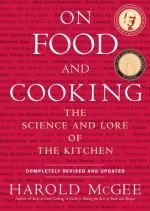|
This section contains 504 words (approx. 2 pages at 400 words per page) |

|
Milk and Dairy Products Summary and Analysis
Milk contains several nutrients, including fat, proteins, lactose, vitamin A, vitamin B and calcium, and milk produced from different species produces different levels of these nutrients. Of the unfermented dairy products, milk is the most widely used. Raw milk, or that taken directly from a cow, has a unique flavor, but can be highly toxic, if the cow is infected, or the udder is tainted. In the 1860's, Louis Pasteur created the concept of heat treatment for wine, which caught on eventually in the dairy industry in three basic forms, all of which extend shelf life by killing pathogenic and spoilage microbes.
To make butter, cream is agitated until fat globule membranes are damaged, and the fat released is allowed to gather. The watery portion of the cream is drained, creating buttermilk, while the solid...
(read more from the Milk and Dairy Products Summary)
|
This section contains 504 words (approx. 2 pages at 400 words per page) |

|




